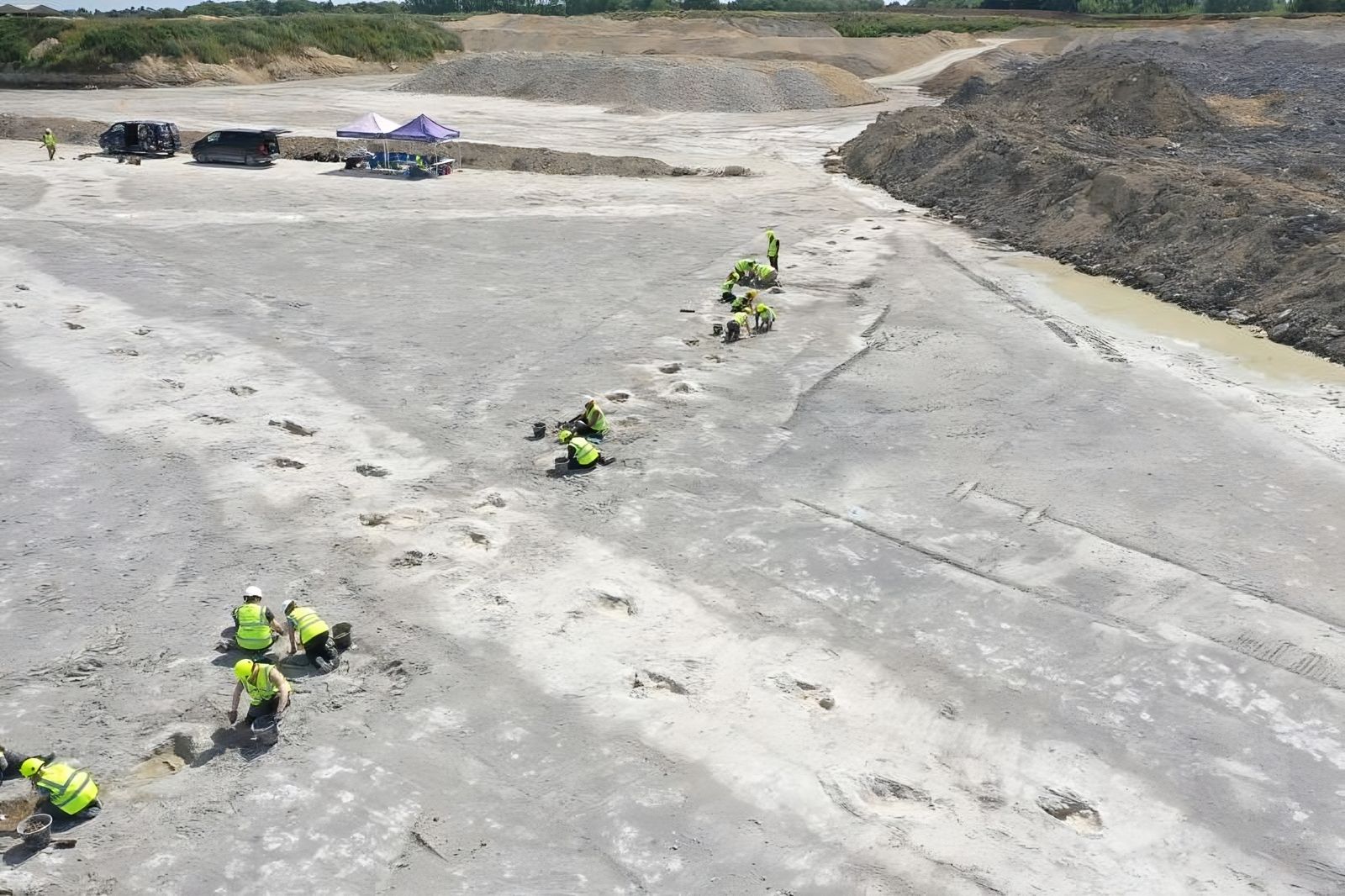The dinosaur highway: 200 dinosaur footprints from 166 million years ago 🦖
Published by Cédric,
Article author: Cédric DEPOND
Source: University of Oxford
Other Languages: FR, DE, ES, PT
Article author: Cédric DEPOND
Source: University of Oxford
Other Languages: FR, DE, ES, PT
Follow us on Google News (click on ☆)

A worker spotted these footprints by chance in June 2024 while working at the Dewars Farm quarry. Researchers have identified five types of tracks, left by sauropods (long-necked herbivores) and a theropod (bipedal carnivore), likely a Megalosaurus. These dinosaurs, among the largest of their time, walked across an ancient tropical lagoon.
The footprints, preserved in mud, were protected by sediments deposited during a probable storm. This discovery provides a better understanding of the movements and interactions of these prehistoric animals. Scientists used drones to create detailed 3D models, preserving these tracks for future generations.
The site, now nicknamed the "dinosaur highway," reveals tracks extending over 150 meters (about 500 feet). Researchers believe it to be one of the largest footprint sites in the world. Sauropods, such as Cetiosaurus, measured up to 18 meters (59 feet) in length, while the Megalosaurus, a formidable predator, reached 9 meters (30 feet).
This discovery was featured on the BBC Two show Digging for Britain. The excavations, led by the universities of Oxford and Birmingham, involved over 100 people. The images and 3D models will allow for detailed study of the movements and biology of these dinosaurs.
A dive into the past: 200 dinosaur footprints in England, witnesses to an ecosystem 166 million years old
The Dewars Farm site adds to a previous discovery made in 1997 in the same region. However, modern techniques now offer unparalleled precision. Researchers hope these footprints will shed more light on the Middle Jurassic ecosystem.
This discovery highlights the importance of preserving such sites for scientific research. The footprints, witnesses to a vanished world, continue to fascinate and inspire both scientists and the general public.